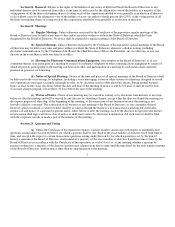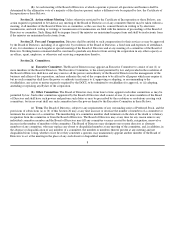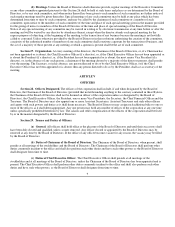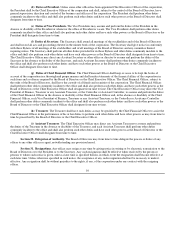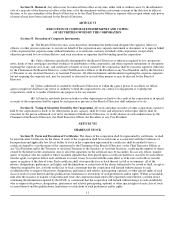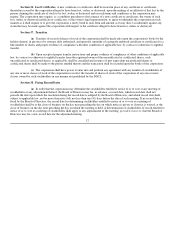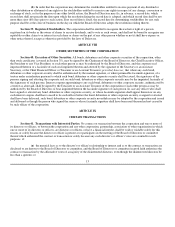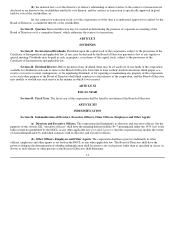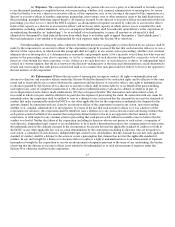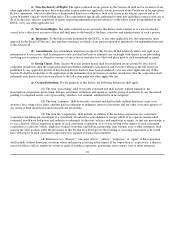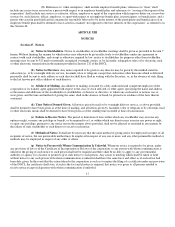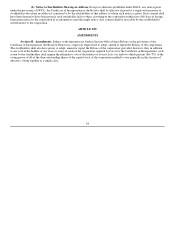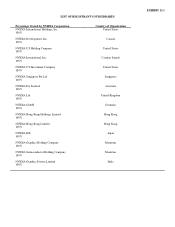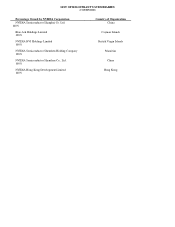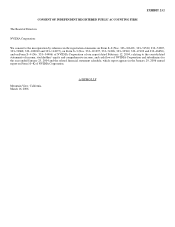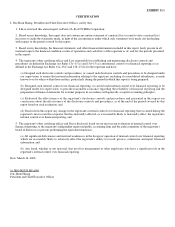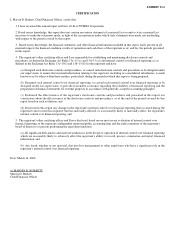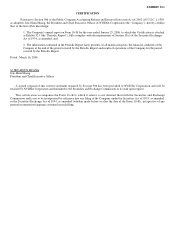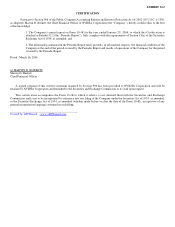NVIDIA 2006 Annual Report Download - page 127
Download and view the complete annual report
Please find page 127 of the 2006 NVIDIA annual report below. You can navigate through the pages in the report by either clicking on the pages listed below, or by using the keyword search tool below to find specific information within the annual report.
(5) References to “other enterprises” shall include employee benefit plans; references to “fines” shall
include any excise taxes assessed on a person with respect to an employee benefit plan; and references to “serving at the request of the
corporation” shall include any service as a director, officer, employee or agent of the corporation which imposes duties on, or involves
services by, such director, officer, employee, or agent with respect to an employee benefit plan, its participants, or beneficiaries; and a
person who acted in good faith and in a manner he reasonably believed to be in the interest of the participants and beneficiaries of an
employee benefit plan shall be deemed to have acted in a manner “not opposed to the best interests of the corporation” as referred to in
this Section 46.
ARTICLE XIII
NOTICES
Section 47. Notices.
(a) Notice to Stockholders. Notice to stockholders of stockholder meetings shall be given as provided in Section 7
herein. Without limiting the manner by which notice may otherwise be given effectively to stockholders under any agreement or
contract with such stockholder, and except as otherwise required by law, notice to stockholders for purposes other than stockholder
meetings may be sent by US mail or nationally recognized overnight courier, or by facsimile, telegraph or telex or by electronic mail
or other electronic transmission in the manner provided in Section 232 of the DGCL.
(b) Notice to Directors. Any notice required to be given to any director may be given by the method stated in
subsection (a), or by overnight delivery service, facsimile, telex or telegram, except that such notice other than one which is delivered
personally shall be sent to such address as such director shall have filed in writing with the Secretary, or, in the absence of such filing,
to the last known post office address of such director.
(c) Affidavit of Mailing. An affidavit of mailing, executed by a duly authorized and competent employee of the
corporation or its transfer agent appointed with respect to the class of stock affected, or other agent, specifying the name and address
or the names and addresses of the stockholder or stockholders, or director or directors, to whom any such notice or notices was or
were given, and the time and method of giving the same, shall in the absence of fraud, be prima facie evidence of the facts therein
contained.
(d) Time Notices Deemed Given. All notices given by mail or by overnight delivery service, as above provided,
shall be deemed to have been given as at the time of mailing, and all notices given by facsimile, telex or telegram or by electronic mail
or other electronic means shall be deemed to have been given as of the sending time recorded at time of transmission.
(e) Failure to Receive Notice. The period or limitation of time within which any stockholder may exercise any
option or right, or enjoy any privilege or benefit, or be required to act, or within which any director may exercise any power or right,
or enjoy any privilege, pursuant to any notice sent in the manner above provided, shall not be affected or extended in any manner by
the failure of such stockholder or such director to receive such notice.
(f) Methods of Notice. It shall not be necessary that the same method of giving notice be employed in respect of all
recipients of notice, but one permissible method may be employed in respect of any one or more, and any other permissible method or
methods may be employed in respect of any other or others.
(g) Notice to Person with Whom Communication Is Unlawful. Whenever notice is required to be given, under
any provision of law or of the Certificate of Incorporation or Bylaws of the corporation, to any person with whom communication is
unlawful, the giving of such notice to such person shall not be required and there shall be no duty to apply to any governmental
authority or agency for a license or permit to give such notice to such person. Any action or meeting which shall be taken or held
without notice to any such person with whom communication is unlawful shall have the same force and effect as if such notice had
been duly given. In the event that the action taken by the corporation is such as to require the filing of a certificate under any provision
of the DGCL, the certificate shall state, if such is the fact and if notice is required, that notice was given to all persons entitled to
receive notice except such persons with whom communication is unlawful.
17


